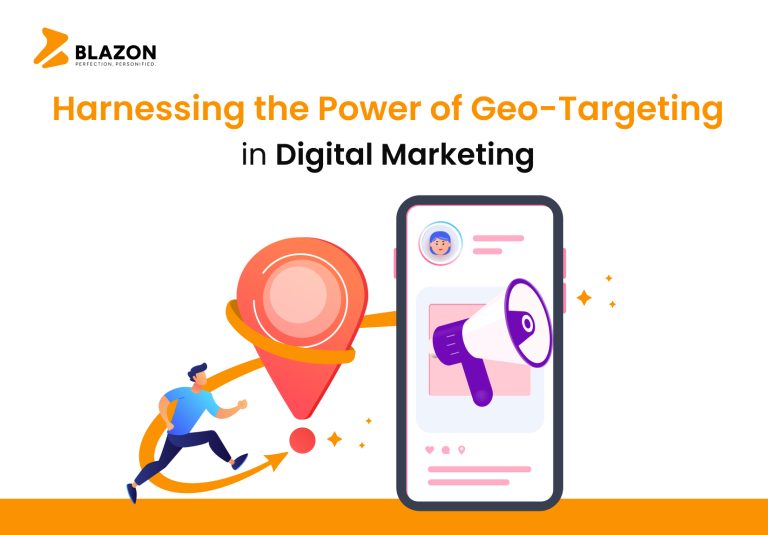e-Commerce Growth Hacking: Leveraging Facebook for Rapid Expansion

Social media revolutionizes how businesses engage with their audience in e-Commerce. Facebook, Instagram, and Twitter serve as vital tools, enabling direct communication and boosting brand visibility. Social media’s interactivity gathers instant user feedback, nurturing trust and a community vibe. Its viral nature amplifies promotional reach, boosting brand recognition and e-Commerce site traffic. To put the significance of social media into perspective, Facebook alone boasts a staggering 2.93 billion monthly active users. This marks a notable increase of 39 million users, or 1.3%, from the previous year, showcasing the platform’s enduring popularity despite the challenges of 2022.
For businesses to thrive in the digital age and reach a broader audience, a strong social media presence is essential. These platforms break down geographical barriers and traditional marketing constraints, providing businesses access to a diverse consumer base. These platforms serve as effective channels for brand promotion, enabling companies to share product updates, create engaging content, and directly engage with their target audience. Leveraging the viral nature of social media content amplification, businesses can naturally expand their market reach.
Moreover, in the competitive e-Commerce landscape, businesses need constant innovation to stay ahead. Faced with intense competition for attention and market share, a multifaceted approach is crucial. This includes adopting cutting-edge technology, improving the user experience, and implementing effective marketing strategies. Investing in reliable, user-friendly websites or apps is essential for easy navigation and a secure buying experience. Adapting to changing customer expectations requires staying updated on emerging technologies like augmented reality, AI, and personalized recommendation systems. Proactive use of platforms, such as Facebook for e-Commerce, is the best social media strategy you can use right now.
Tapping into New Markets
Kampus Production | Pexels
a. Identifying Target Demographics on Social Media Platforms
Businesses looking to get the most out of their online presence must strategically identify who their audience is on social media platforms. Businesses can obtain in-depth knowledge of their audience by utilizing the extensive data and insights provided by social media platforms such as Facebook, Instagram, and Twitter. Analyzing variables like age, gender, geography, interests, and online habits can yield a detailed picture of the intended audience. When creating content, ads, and interaction methods that are specifically targeted at the market demographic, basic audience information is crucial. Hence, accurate demographic targeting guarantees appropriate resource allocation in addition to improving the efficacy of marketing campaigns online. Content that is tailored to the tastes and traits of the target audience allows organizations to build deeper relationships and boost engagement, making it the best social media strategy to start working on.
b. Utilizing Market Research to Understand Audience Behavior
Understanding audience behavior through market research is vital for informed business decisions. Techniques like surveys, interviews, and analytics provide crucial insights into market inclinations, requirements, and behaviors. This comprehensive understanding allows e-Commerce to align their marketing strategies, offerings, and products with customer expectations. Market research also identifies new trends, fostering flexibility in a rapidly changing market. A data-driven strategy derived from market research helps organizations make strategic choices, connect with their audience, build brand loyalty, and achieve long-term success in a competitive market, whether assessing current offers or exploring new options.
c. Tailoring Content and Campaigns to Specific Market Segments
Targeting specific market groups is a crucial strategy for companies looking to connect with their audience in a personalized way. Through thorough market research, organizations can identify the distinct attributes, inclinations, and requirements of various groups, tailoring content to each one. This approach goes beyond a one-size-fits-all marketing plan, allowing companies to create more appealing and relevant messages. Customizing content, whether through imagery, product attributes, or communication tone, ensures marketing initiatives are both effective and efficient. This personalized strategy not only increases participation but also enhances the overall impact of the company’s connection with its audience.
d. Exploring International Markets Through Social Media Strategies
Social platforms provide a global stage for engaging diverse audiences across nations and cultures. By strategically adapting content, language, and marketing, businesses bridge cultural gaps and connect with new consumers. Social media’s reach and targeting capabilities ensure precise localization of campaigns, making marketing initiatives culturally relevant. Additionally, utilizing social media for international growth establishes a global online presence, facilitates cross-cultural communication, and boosts brand recognition. The interactive nature of social media provides real-time insights into consumer preferences, enabling businesses to adapt swiftly.
Driving Impressive Growth
George Milton | Pexels
a. Creating Compelling Content that Resonates with the Audience
Effective marketing relies on creating captivating content that resonates with the target audience. Understanding the audience’s interests, requirements, and preferences allows businesses to forge a deep connection through compelling content. Engaging visual content, created using background remover and image editing services, adds another layer of appeal. Beyond mere product promotion, this content emotionally involves the viewer, tells a story, and adds value. Providing content that addresses audience needs or goals—whether through blog entries, videos, social media updates, or other formats—is vital. An authentic and well-crafted narrative enhances audience engagement, fostering loyalty and trust. Consistently delivering compelling content not only captures attention but also improves brand perception and ultimately builds lasting relationships with the audience.
b. Developing and Implementing Effective Social Media Advertising Campaigns
Successful social media marketing is essential for enhancing online presence and engagement. It involves integrating data-driven analytics, precise targeting, and compelling content. The initial step is creating visually appealing advertising creatives that align with the brand’s messaging. Utilizing powerful targeting features on platforms like Facebook ensures ads reach the most relevant audience. Real-time strategy optimization involves tracking campaign effectiveness through indicators like click-through and conversion rates, helping businesses enhance conversions and brand exposure by strategically placing their message in front of potential customers. Overall, developing and implementing social media advertising campaigns is hard but beneficial in the long run.
c. Using Influencers and Partnerships to Enhance Brand Visibility
In the current competitive landscape, increasing brand visibility is best accomplished through partnerships with influencers and strategic relationships, especially on platforms like Facebook for e-Commerce. Businesses connect with influencers who share interests with their target audience, creating authentic connections and building credibility within established networks. Influencers, through relatable content, cultivate trust and authenticity, amplifying the brand’s influence. Collaborations with other companies or brands extend reach by tapping into shared audiences, elevating brand awareness in new territories. Ultimately, the use of influencers and collaborations goes beyond enhancing brand recognition; it nurtures a community, promoting sustained engagement and loyalty.
d. Analyzing Data and Performance Metrics for Continuous Improvement
A social media strategy for e-Commerce focused on continuous improvement requires a thorough analysis of data and performance metrics. Data serves as a guiding compass for operational and marketing decisions, refining strategies over time. Thus, by examining key performance indicators such as customer feedback, engagement metrics, and conversion rates, organizations gain valuable insights into the effectiveness of their operations. This data-driven approach enables pinpointing areas for optimization and effective strategies. Regular data analysis fosters flexibility and responsiveness to market dynamics, whether through website improvements, advertising tweaks, or product adjustments, which are essential for success in today’s rapidly evolving corporate landscape.
Staying Ahead of the Competition
Ono Kosuki | Pexels
a. Monitoring Competitors’ Social Media Strategies
In the digital realm, closely monitoring competitors’ social media efforts is strategically crucial. Understanding the strategies employed on platforms like Facebook, Instagram, and Twitter provides valuable insights into market trends, audience engagement, and new opportunities. Analyzing competitors’ content, posting frequency, and engagement metrics allows businesses to improve their own social media strategy. By staying informed about competitors’ successes and challenges, businesses can make informed decisions and adapt to market dynamics. Staying competitive in the digital market requires a proactive approach to observing competitors on social media, whether that involves refining targeting methods, exploring untapped opportunities, or adjusting content strategies.
b. Embracing Emerging Trends in Social Media and e-Commerce
Remaining inventive and relevant in the dynamic digital market requires businesses to embrace new trends in networking sites and e-Commerce. Staying ahead of the curve is strategically vital, given the continuous shifts in consumer behavior and technology. Emerging trends such as social commerce integration, augmented reality shopping, and live commerce are reshaping how businesses connect with people and sell products. Adjusting to these trends allows businesses to create a more engaging and personalized online buying experience, fostering increased engagement and brand loyalty. Furthermore, early adoption of cutting-edge features on social media platforms can provide a competitive edge and attract a tech-savvy customer base. Embracing these trends reflects a brand’s forward-thinking attitude and positions it for ongoing success in the ever-evolving digital landscape.
c. Innovating and Adapting Strategies Based on Industry Changes
Businesses must continuously innovate and adapt their approaches to remain competitive in the ever-changing business landscape. Vigilantly observing evolving customer behavior, technological advancements, and industry trends enables enterprises to identify opportunities and potential challenges. Maintaining capability and competitiveness necessitates the ability to innovate swiftly and adjust tactics in response to changes. Remaining flexible and responsive to the evolving needs of the target audience involves embracing new technology, adjusting marketing strategies, or enhancing product offerings. This demands a flexible and adaptive approach, and those who consistently embrace innovation and modify their approaches are better positioned for long-term success amid industry evolution.
d. Emphasizing Customer Loyalty and Retention Through Social Media
For lasting success, organizations must prioritize customer loyalty and retention through online platforms. Social media platforms, especially Facebook for e-Commerce, provide a direct avenue for strengthening bonds with existing clients, allowing businesses to engage in dialogue, address criticism, and express gratitude. These platforms effectively communicate loyalty programs, unique incentives, and personalized content, making customers feel valued. Consistent communication through social media maintains brand awareness and encourages repeat business. That is why zeroing in on customer loyalty in these channels, especially Facebook for e-Commerce, not only improves retention rates but also transforms satisfied customers into brand ambassadors, fostering organic growth through positive word-of-mouth and ongoing customer advocacy.
Tools and Resources
cottonbro studio | Pexels
a. Listing Essential Social Media Management Tools for e-Commerce
Today, effective e-Commerce operations and a strong online presence rely on essential social media management tools like Buffer, Hootsuite, and Sprout Social. In the e-Commerce aspect, Shopify, with seamless integration across social networks, ensures a consistent online purchasing experience. Also, monitoring brand mentions and sentiment through tools like Mention or Brandwatch is essential. Nevertheless, combining these tools enhances content management efficiency for e-Commerce enterprises. You can also ask for help with image editing services for your content and other automated tools that have varying features you can capitalize on and use for your publicity materials.
b. Exploring Analytics Tools to Measure Performance
In the realm of e-Commerce, delving into analytics tools to gauge performance on Facebook is indispensable. Facebook Analytics, among other social media analytics systems, offers a wealth of data encompassing user activity, interaction, and conversion rates. This exploration enables businesses to meticulously monitor site traffic, user engagement, and the success of marketing endeavors on the platform. By dissecting key performance indicators, businesses can seamlessly tailor their strategic plans, optimize resource allocation, and enhance content to resonate more effectively with their target audience. Capitalizing analytics tools, particularly those designed for Facebook like Facebook Insights, empowers e-Commerce enterprises to make informed decisions, adapt to dynamic market conditions, and heighten their competitiveness in the ever-evolving digital landscape.
c. Providing Resources for Staying Updated on Social Media Trends
To stay at the forefront of digital marketing, businesses must invest in resources to stay updated on social media trends. Platforms like industry-specific blogs offer informative articles, seminars, and guides covering new trends, algorithm changes, and best practices on social media strategy for e-Commerce. Monitoring influential individuals and influencers on different platforms can also provide a real-time gauge of industry changes. Additionally, social media and internet marketing-focused webinars, conferences, and online courses offer valuable opportunities for ongoing education. By providing access to these tools, businesses empower their employees to stay informed, make proactive strategy adjustments, and leverage the latest trends for maximizing their digital presence.
Challenges and Solutions
Sam Lion | Pexels
a. Addressing Common Challenges in Social Media for e-Commerce
To maintain a strong e-Commerce presence on social media, businesses must address key issues. This includes strategic solutions for quick customer responses, managing negative comments, and staying updated on algorithm changes. Efficient client contact management involves strong customer service protocols, chatbots for immediate responses, and vigilant social media monitoring. A crisis communication strategy is essential to minimize the impact of unfavorable comments. Staying informed about algorithm changes on platforms like Facebook and Instagram allows for content strategy adjustments to maintain visibility. Additionally, resolving data security and privacy concerns is crucial for building and preserving consumer trust. Tackling these issues decisively empowers e-Commerce companies to establish a dynamic social presence.
b. Offering Practical Solutions and Best Practices
Guiding organizations to success involves offering practical solutions and best practices for addressing technological, operational, and marketing challenges. By exchanging industry experience, data-driven insights, and successful case studies, companies can implement tried-and-true techniques. Taking a proactive stance helps increase productivity, enhance decision-making, and stay current with industry standards. Defining best practices and providing workable solutions contribute to collective knowledge, fostering success and continuous improvement across various fields.
c. Highlighting the Importance of Adaptability in Overcoming Challenges
Emphasizing the value of adaptation is crucial for overcoming challenges, especially in fast-paced work settings. A flexible mindset is essential in the face of unforeseen challenges, shifting market trends, and technological advancements. Businesses that view change as an opportunity rather than a setback can better overcome obstacles with adaptability and inventiveness. Adopting an agile approach equips companies to quickly pivot, modify plans, and seize new opportunities, fostering continuous learning and growth. Thus, prioritizing adaptation enables businesses to face challenges head-on and positions them for long-term success in a dynamic environment.
Conclusion
Kampus Production | Pexels
In today’s digital age, social media has become a crucial component of e-Commerce growth strategies. Amongst all social media sites, Facebook is the ideal platform for rapid expansion because of its vast system base and updated advertising and marketing tools. By implementing growth hacking techniques, e-Commerce businesses can leverage Facebook for e-Commerce because of its algorithm, targeting options, and a promise for increased conversions. Additionally, creating engaging content and utilizing Facebook Live for building a community around a brand can further enhance the effectiveness of Facebook marketing. Overall, a data-driven approach to Facebook advertising and marketing is essential for maximizing results and achieving rapid e-Commerce growth. This social media strategy for e-Commerce, when executed effectively, can significantly contribute to the overall success of an e-Commerce business.
Author:

Yen Pedrajas, Removal.AI
Yen is a content writer for Removal.AI–an AI image background remover tool. She is a digital marketing and e-Commerce enthusiast who loves to write and share new insights about marketing, e-Commerce, and growth-hacking tips for startup businesses.
© 2023 Blazon All Rights Reserved.









 +91 97866 99000
+91 97866 99000 (720) 500-3435
(720) 500-3435 +4915168619030
+4915168619030





Leave a Reply
You must be logged in to post a comment.